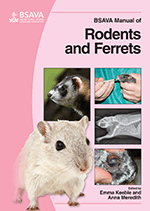
Full text loading...

Diagnostic imaging of rodents presents several technical challenges related to their small body size, rapid respiratory rate, reluctance to accept mechanical restraint and unusual conformation. None of these factors is insurmountable but they do necessitate modification of the radiographic imaging techniques and principles of interpretation used for dogs and cats. The chapter details radiographic technique and instrumentation such as Anaesthesia and sedation; Digital radiographic systems; Computed tomography and magnetic resonance imaging; Ultrasonography. It examines radiographic interpretation of the thorax, abdomen and musculoskeleta.
Rodents: diagnostic imaging, Page 1 of 1
< Previous page | Next page > /docserver/preview/fulltext/10.22233/9781905319565/9781905319565.3-1.gif

Full text loading...


















